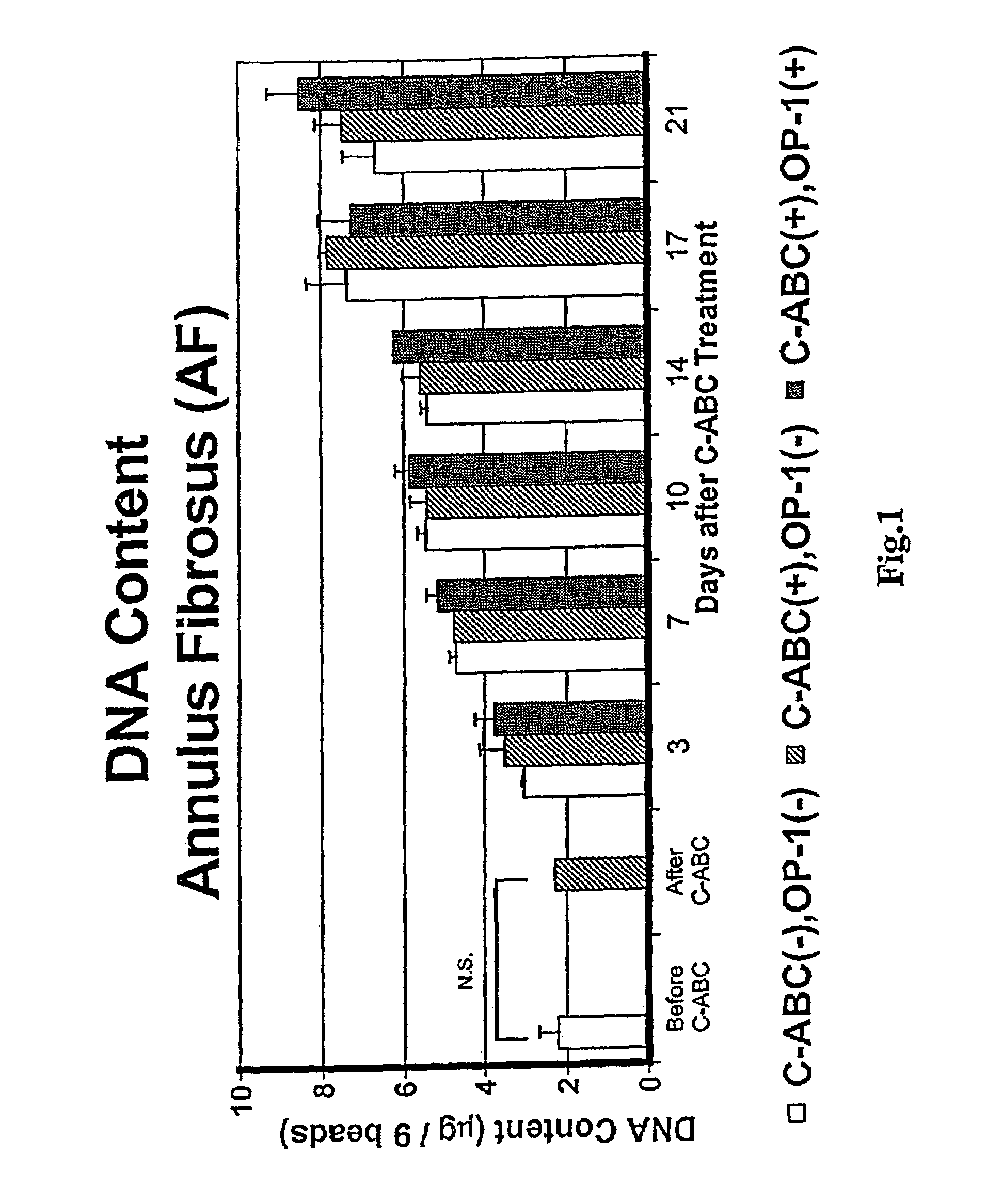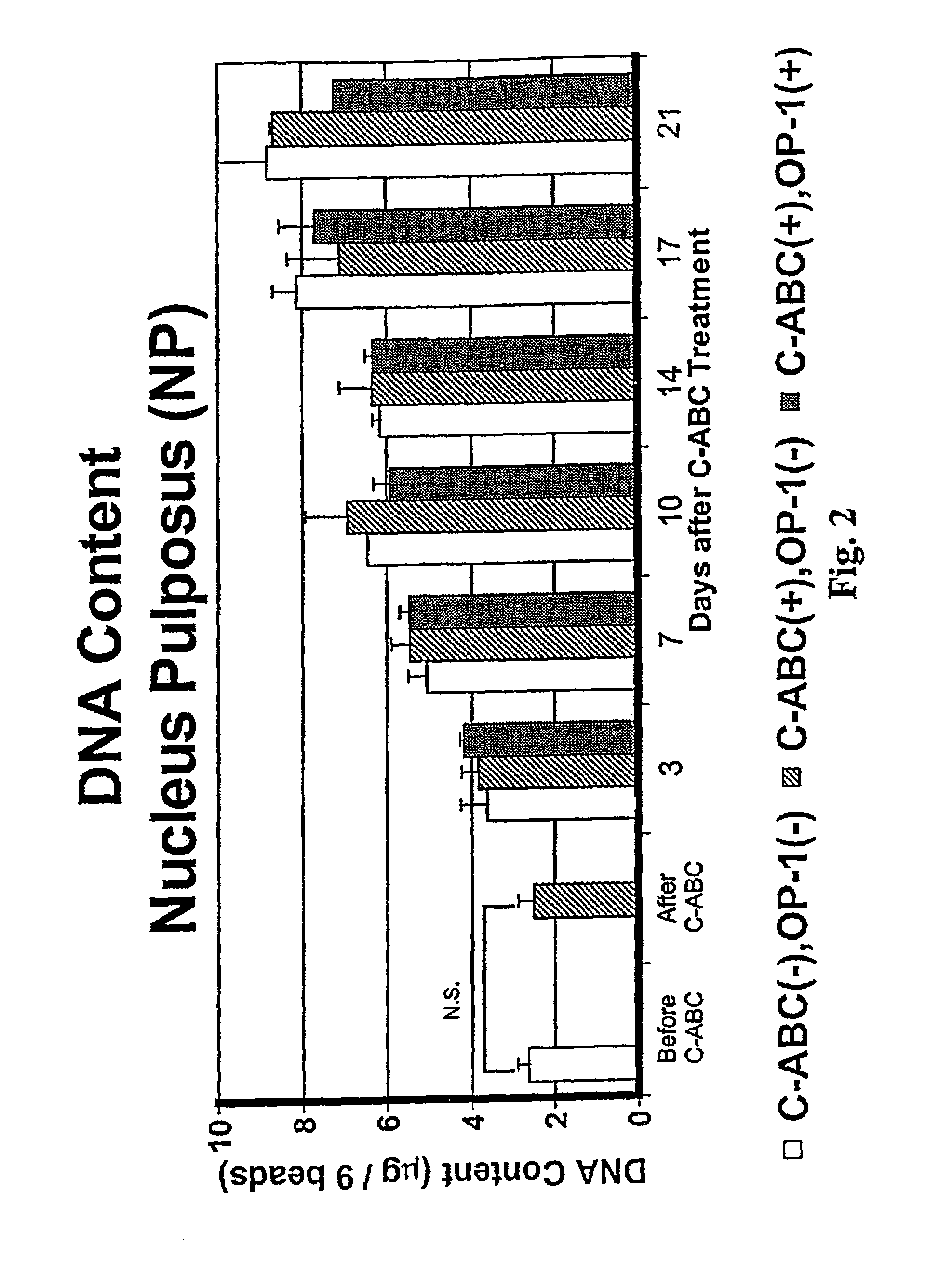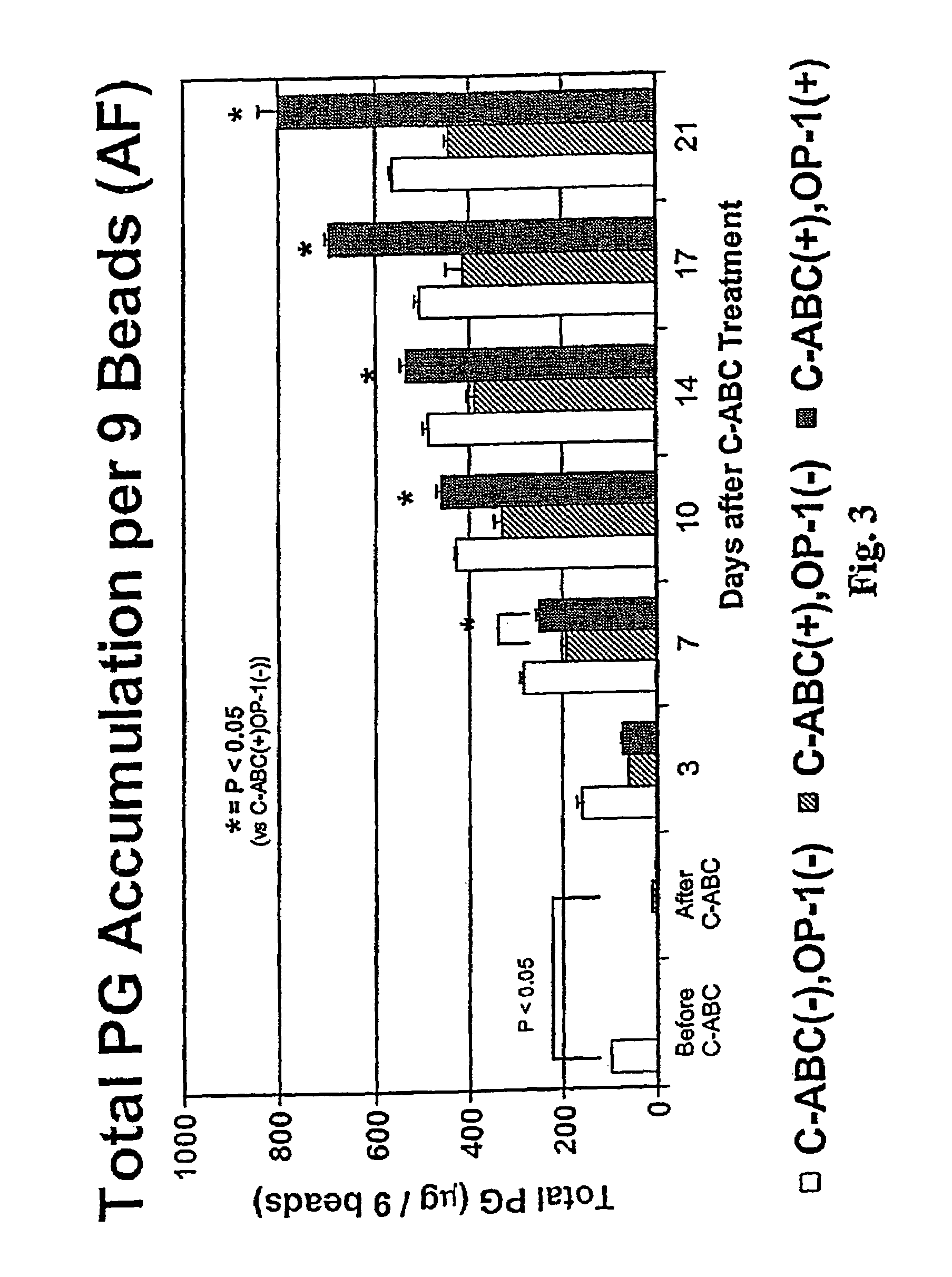Method for the treatment of chemonucleolysis
a technology of chemonucleolysis and mammalian body, which is applied in the field of treatment of mammalian body in need of chemonucleolysis, can solve the problems of limited progress in this field, number of working days lost, and devastating economic burden on individuals and society, and achieves the effect of promoting disk repair and fewer complications
- Summary
- Abstract
- Description
- Claims
- Application Information
AI Technical Summary
Benefits of technology
Problems solved by technology
Method used
Image
Examples
example 1
Upregulation of Extracellular Matrix Metabolism by Rabbit Annulus Fibrosus and Nucleus Pulposus Cells Using Recombinant Osteogenic Protein-1
Materials and Methods
[0066]Cell Culture: Lumbar intervertebral disks (IVDs) were aseptically dissected from the spine of New Zealand white rabbits after euthanasia. The NP and AF were separated by blunt dissection and separately pooled. Cells were released from each tissue by sequential enzyme digestion (Pronase 1 hour, and Collagenase P and DNAase II for 16 hours) and the isolated cells encapsulated in 1.2% low-viscosity alginate at 2 million / mL as previously described. Chiba, K. et al., Spine 22:2885 (1997). The cultures were maintained in DMEM / F12 plus 10% FBS with a daily change of media.
[0067]Measurement of the Effect Of rhOP-1 on Cell Proliferation and PG and Collagen Synthesis: On day 7 of culture, the cells in alginate were incubated in the presence of various concentrations of the growth factor recombinant human OP-1 (rhOP-1) for 72 hou...
example 2
Osteogenic Protein-1 Stimulation of Proteoglycan Synthesis by Nucleus Pulposus and Annulus Fibrosus Following Chondroitinase ABC-Induced Chemonucleolysis Treatment
Materials and Methods
[0078]Lumbar spines were removed en bloc, under aseptic conditions, from adolescent New Zealand white rabbits weighing 3–4.0 Kg (IACUC approval # 94-053). The lumbar disks were dissected and the NP separated in each case from the AF. Cells were separately isolated from the two tissues by sequential enzyme digestion and resuspended in 1.2% low viscosity sterile alginate at 2 million / mL. Chiba, K., et al., Spine 22:2885–2893 (1997). Beads were formed by expressing this solution dropwise, through a 22 gauge needle, into a 102 mM CaCl2 solution. The NP and AF cells in the beads were maintained in batch culture in DMEM / F-12 medium containing 10% FBS, 25 μg / mL ascorbate and 50 μg / mL gentamicin. This complete medium was changed daily throughout the study.
[0079]On day 14 of culture, beads were divided into thr...
example 3
Osteogenic Protein-1 Stimulation of Cartilage Matrix Repair by Nucleus Pulposus and Annulus Fibrosus
[0087]This Example demonstrates the efficacy of osteogenic protein in stimulating cartilage matrix repair by cells, specifically nucleus pulposus (“NP”) and annulus fibrosus (“AF”) cells, isolated from intervertebral discs (“IVDs”).
[0088]In this Example, lumbar discs were isolated from New Zealand white rabbit and NP tissue was separated from AF tissue by dissection. NP and AF cells were separately isolated from the two tissues by sequential enzyme digestion and resuspended in 1.2% low viscosity sterile alginate, which was then formed into beads. The cells were separately cultured in DMEM / F-12 medium containing 10% FBS, with the medium being changed daily. After 7 days, each culture was subdivided into three groups. The first group was a control group that was not treated with OP-1. The second and third groups were grown in the presence of OP-1 for 72 hours, the second group being tre...
PUM
| Property | Measurement | Unit |
|---|---|---|
| Time | aaaaa | aaaaa |
Abstract
Description
Claims
Application Information
 Login to View More
Login to View More - R&D
- Intellectual Property
- Life Sciences
- Materials
- Tech Scout
- Unparalleled Data Quality
- Higher Quality Content
- 60% Fewer Hallucinations
Browse by: Latest US Patents, China's latest patents, Technical Efficacy Thesaurus, Application Domain, Technology Topic, Popular Technical Reports.
© 2025 PatSnap. All rights reserved.Legal|Privacy policy|Modern Slavery Act Transparency Statement|Sitemap|About US| Contact US: help@patsnap.com



